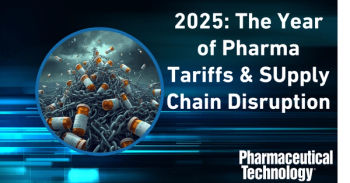
PTSM: Pharmaceutical Technology Sourcing and Management
- PTSM: Pharmaceutical Technology Sourcing and Management-06-03-2015
- Volume 11
- Issue 6
A New World for Pharma Regulations?
The restructuring of the International Conference on Harmonization, which is expected to begin in late 2015, could have a significant impact on the way pharmaceutical regulations are harmonized worldwide.
In late 2015, the Geneva-based International Conference on Harmonization (ICH) will begin to restructure itself in what could trigger radical changes in the way pharmaceutical regulations are harmonized throughout the world. It may be a confusing process, with different representative bodies closely linked to ICH vying to be the main driving force behind endeavours to make the regulation of medicines more responsive to conditions in the global pharmaceuticals marketplace.
Past achievements
ICH is considered to have done a good job since it was founded in 1990 by an alliance of regulatory agencies and the international research-based pharmaceutical industry in Europe, the United States, and Japan. “It has been a great success in terms of fulfilling its main objective of developing and implementing harmonized guidelines and standards for drug development and registration,” says Paer Tellner, regulatory affairs director at the European Federation of Pharmaceutical Industries and Associations (EFPIA).
In line with its mission to reduce drug-development costs by eliminating duplication and cutting the time lag between discovery and market launch, ICH had, by 2003, drawn up guidelines on nearly 60 topics. By then, its main achievement had been the drawing up of the common technical document (CTD), a standard form for applications for drug marketing authorizations.
During the past 10 years, ICH has concentrated a lot of its efforts in gaining more international consistency in key areas such as standards of good manufacturing practice (GMP), particularly in the production of APIs. Other priorities have been rules on good clinical practice and standards for biopharmaceuticals and advanced therapies. Nonetheless, in the era of globalization and rapidly growing emerging economies such as those of China and India, ICH’s legitimacy has been undermined by the fact it is run by a partnership of six organizations-the regulatory agencies and pharmaceutical industry associations of the European Union, the US, and Japan.
Drivers for reorganization
ICH is being reorganized so that it has a structure that enables new members to join the organization, particularly the regulatory agencies of China and India, where the vast majority of APIs on the world market is produced. These reforms, however, are taking place when a new alliance of regulators is being established. Some of its members will also be ICH members or regular participants in its meetings.
The International Coalition of Medicines Regulatory Authorities (ICMRA) is being set up in response to the increased complexity of global pharmaceutical supply chains and of new medicinal products, according to a fact sheet issued by the new group (1). “Regulators must act globally and domestically, and collaboratively,” the fact sheet says. The future relationship between the ICH and ICMRA, whose objectives and structure will be finalized by 2016, is at the moment uncertain. The International Pharmaceutical Regulators Forum (IPRF), formed in June 2013, already acts as an offshoot of the ICH by providing a regulators-only facility for discussions on the margins of ICH meetings. Its membership is open to all regulatory authorities, not just ICH participants.
“The IPRF is a technical platform for regulators, [while] ICMRA is discussing high-level/strategic issues amongst heads of agencies,” explains a spokesperson for Swissmedic, the Swiss medicines agency that runs the IPRF secretariat and is itself a member of both organizations. In addition, ICMRA’s position with the 35-year-old International Conference of Drug Regulatory Authorities (ICDRA), which has more than 100 members including ICMRA members, needs to be sorted out. ICDRA, which is run by the World Health Organization (WHO), also determines priorities for the international and national regulation of medicines.
ICMRA will also have to clarify its relations with a growing number of organizations, which, besides ICH, set standards in the pharmaceutical and related areas. These organizations include the International Organization for Standardization (ISO); the Council for International Organization of Medical Sciences (CIOMS), which covers mainly biomedical products; Health Level Seven International (HL7), dealing with electronic health information; and the Pharmaceutical Inspection Convention and Pharmaceutical Inspection Co-operation Scheme (PIC/S).
Extending membership
A key objective behind the ICH reform is to strengthen its leadership in the drawing up of global pharmaceutical standards by enlarging its membership. This move would not only give it more clout on the global stage but also broaden its access to scientific and technical expertise. The need to extend the range of participants in its meetings was acknowledged
10 years ago when five groups of regional agencies, undertaking their own regional harmonization initiatives (RHIs), were invited in 2005 to take part in ICH’s global co-operation group (GCG), a subcommittee of its steering committee. Two years later, this invitation was extended to representatives of drug regulatory authorities (DRAs) from non-ICH regions. Since then, representatives from RHIs and DRAs have been participating in the meetings of the ICH steering committee itself, although without voting rights. In 2014, the Swiss and Canadian regulatory agencies-Heath Canada and Swissmedic-were made full members of the committee to which they had previously, with WHO, been observers. Other changes have been improvements to the transparency of the ICH. Agendas and minutes of the steering committee meetings are published on the organization’s website together with the work plans of the expert working groups.
A key agreement has been an enhanced role for regulators in the development of guidelines by dividing the process into two distinct parts. The technical content of guidelines is the responsibility of industry and regulator scientific experts, but their adoption is the responsibility of the regulators. Regulators, therefore, have the right to sign off guidelines without the agreement of industry representatives.
The ICH reforms will enter their final phase in 2015 when the organization is due to become an independent legal entity. Currently, it effectively has no separate legal status as the International Federation of Pharmaceutical Manufacturers and Associations (IFPMA) hosts its secretariat at its Geneva headquarters and signs contracts on its behalf as an ICH trustee.
As an international association, under Swiss law, ICH will have much more flexibility over choice of membership, funding, and structure. The move will underline how much the regulators will be the dominant force within the new ICH, although the aim will be to reach decisions as much as possible by consensus. Once the ICH becomes a legal entity, changes to its structure can go ahead. Its steering committee will be replaced by a management committee, which will be responsible primarily for administrative and financial matters. The organization will ultimately be controlled by an assembly, which will approve guidelines and amendments to statutes. It will consist initially of the existing permanent members, but will be enlarged later by the inclusion of current non-ICH DRAs and RHIs.
Eligibility criteria
These new full members will have to first meet eligibility criteria. For regulatory bodies, they will have to have attended at least three ICH meetings during the past two years and be able to make commitments for all their members. Industry associations will have to be global in scope and membership, have made similar regular attendance at ICH meetings, and must be affected by ICH guidelines.
Among the regulators, the leading candidates to be first of the non-permanent members of the assembly are the DRAs of Brazil, Korea, Russia, Singapore, South Africa, and China. The RHIs would be those operated within the Asia-Pacific Economic Co-operation, Association of Southeast Asian Nations, East African Community, South African Development Community, and the Middle East Gulf Co-operation Council.
The permanent regulatory members of the ICH, as well as some its regulatory participants, are already members of ICMRA’s interim management committee. These members include the DRAs of China and Brazil, as well as some individual medicines agencies in the EU, such as those of Ireland, Italy, Netherlands, and Germany.
The new association seems to be positioning itself as a co-ordinator of the developers of international standards, including the ICH. Among its priorities are “the need to align the agendas of international initiatives enablers with regulators’ evolving needs” and “improved integration of all different international regulatory initiatives,” Peter Bachmann, an official at Germany’s medicines agency, stated at a London medicines conference (2). The reformed ICH will be a major focus of ICMRA’s attention. For the first time, ICH may be answerable to a single global regulators’ organization that will be able to influence both its agenda and strategy.
References
1. Health Canada, “
2. P. Bachman, “Opportunities and challenges of globalization,” presentation at EGA Regulatory and Scientific Affairs Conference (London, February 2015).
Article DetailsPharmaceutical Technology
Vol. 39, No. 5
Pages: 20–22
Citation: When referring to this article, please cite it as S. Milmo, “ICH Prepares for Major Reform,” Pharmaceutical Technology39 (5) 2015.
Articles in this issue
over 10 years ago
Theorem Opens Clinical Supplies Facilityover 10 years ago
Titration Systems Configured for Single-Analyte Testingover 10 years ago
Aseptic CMO Recognized as Company to Watchover 10 years ago
Kit Detects and Quantifies HCPsover 10 years ago
Small-Molecule APIs Still Play a Big Roleover 10 years ago
CMOs in Asia Gain Market Share, Slowlyover 10 years ago
Safety Testing on the Manufacturing Floorover 10 years ago
Advances in Continuous Crystallizationover 10 years ago
Keeping Up with Biologics AdvancesNewsletter
Get the essential updates shaping the future of pharma manufacturing and compliance—subscribe today to Pharmaceutical Technology and never miss a breakthrough.




